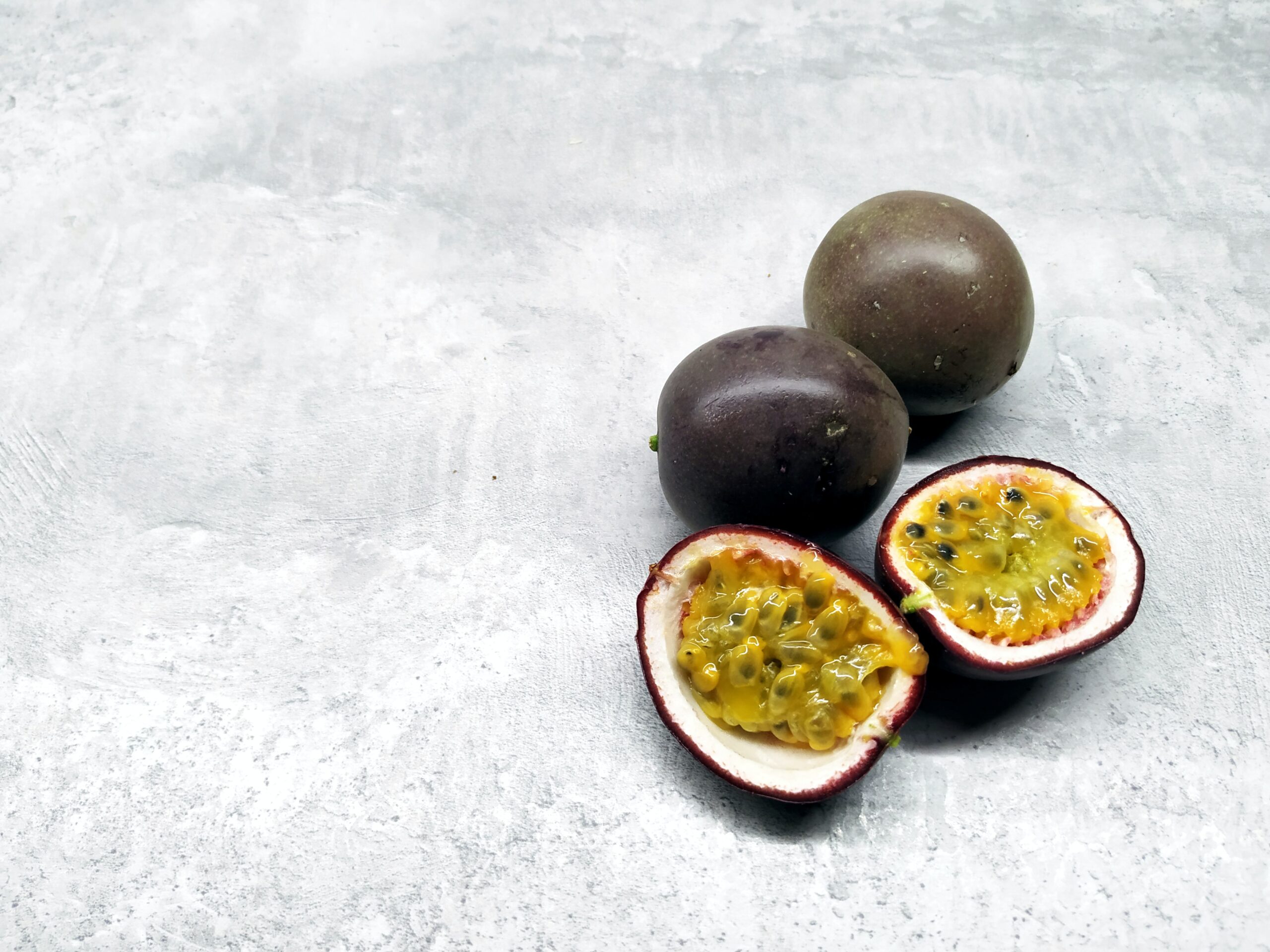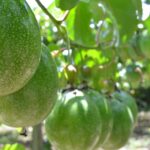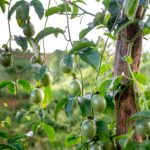Granadillas, also known as passionfruit, is a vine species of passionflower that is native to Brazil. It belongs to the family Passiflora.
The centre of the fruit is filled with yellow gelatinous pulp and seeds. It is sweet yet acidic tasting. The thick outside rind is cut open to reveal the yellow insides. The plant itself grows lush green leaves, and the flowers are considered to also be ornamental as the unique blooms are quite interesting to look at.
Granadillas are ideal for commercial production or as an addition in your home garden. There are two commercially viable passion fruit types, namely the purple and the yellow-skinned aromatic fruit.
It is mostly consumed in juices, salads or on its own, but the pulp is often used as a garnish.
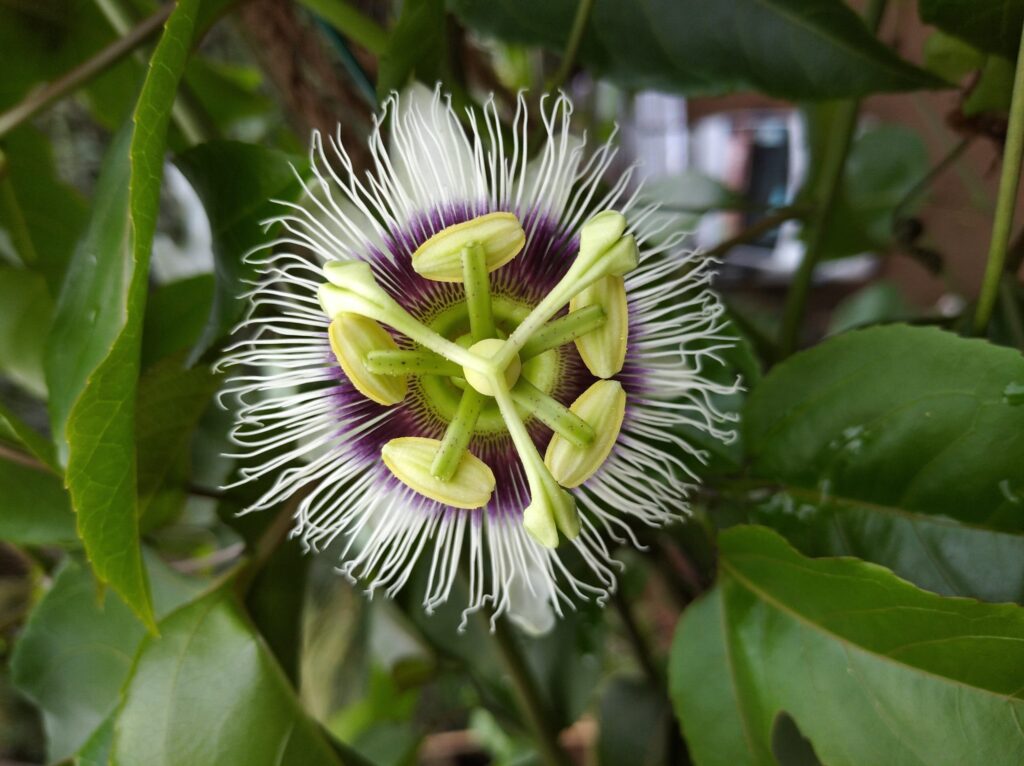
The gorgeous ornamental flowers of these fruits are interesting to look at. (Source: Charlie Wick on pexels)
Climatic requirements
The ideal climate to grow granadillas has a moderate temperature throughout the year. The purple variety is particularly susceptible to frost. To mitigate this temperature sensitivity, plants can be planted on cool slopes in hot areas, or warm slopes in cool areas. The temperature should be between 5 °C and 29 °C.
High humidity is preferred. These plants require high rainfall of up to 1 200 mm per year, preferably rain that is well distributed throughout the year.
Harvesting of the fruit occurs when they ripen, but have not yet reached their deep colour.
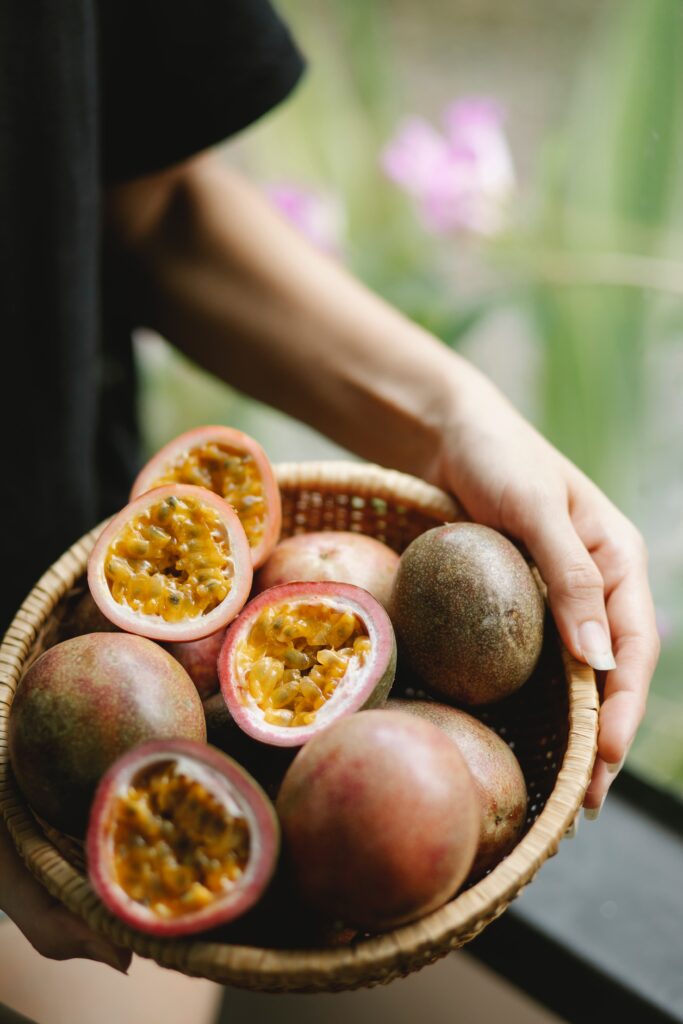
A bowl of fresh granadillas ready to be enjoyed. (Source: Any Lane on pexels)
Soil requirements
Granadillas have shallow roots. They are sensitive to waterlogging, so the soil needs to be sandy to loam soil. It is necessary to till the soil with a plough or ripper to break up the compacted soils. Cultivate no less than 800 mm deep.
Examine the soil closely. Add lime and phosphate to the root zone. Calcium and phosphorus can be worked into the soil as well.
The thin vines require support from posts and trellis to carry the forming fruit. (Source: Pixabay)
Sowing and planting
You can harvest your own seed from healthy, ripe fruits. Cut the fruit open and scoop out the seeds and pulp. Separate the contents by washing the seed and pulp. Dry the seeds in the shade. It can later be planted in a soil mixture that has been sterilised. You can either use seed trays or bags.
Sow two seeds per hole. You will thin them out by selecting the stronger plants later.
Once the seedlings emerge and the additional plants have been removed, add a stake next to each so it can prepare to trail. Regularly remove side shoots.
The seedlings are ready for transplanting when they are between 300 and 400 mm in height (3 to 6 months old). They should be healthy plants with dark green leaves. Ideally, the best time to transplant is between August and September.
Plant the plants 1 to 2 m apart. Closer together means a higher risk of transmitting soil-borne diseases and viruses, but it also means a higher yield over a smaller area.
Granadillas are climbing plants. They, therefore, require a trellis for the vines to trail on. It needs to be strong enough to carry the weight of your developing fruits. Wooden posts can be used, but these need to be solid and treated to be termite resistant. Posts should be 2 m high. String 12-gauge wire across the poles. Add leader lines from the wire to the plant so the vines can be trained to grow towards the framework. You can assist it by wrapping the vines loosely around the wire.
Further care of your fruits may include pruning the vines to stimulate growth, removing dead materials and preventing overlap. Pruning, however, is not crucial, since most plantations only last three years, producing fruit for only 12 to 18 months of that period.
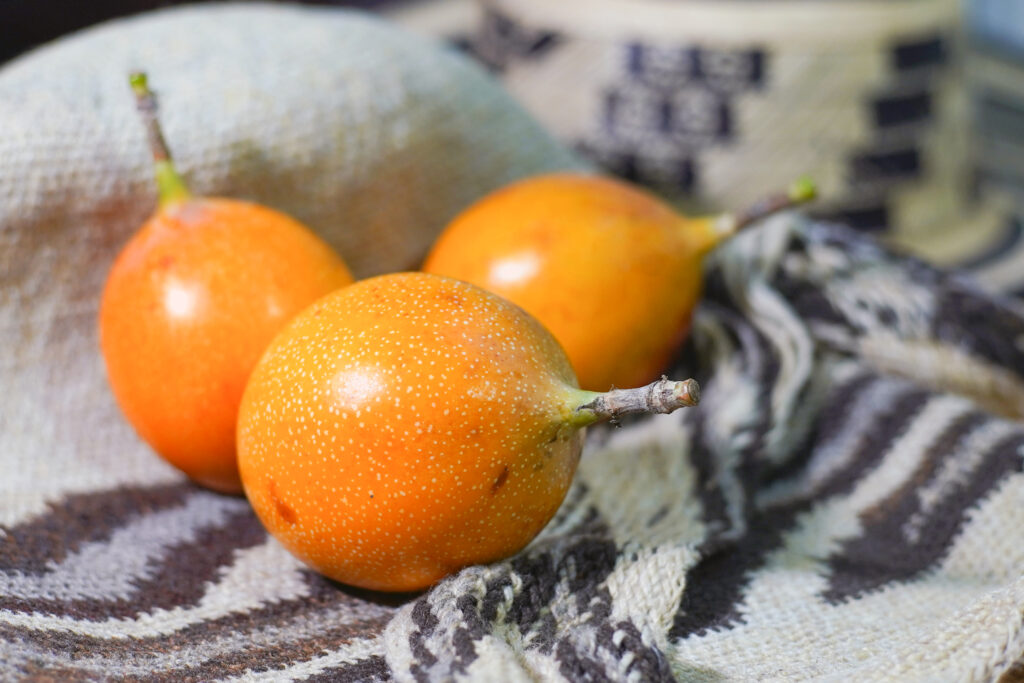
There is also a yellow-skinned granadilla. (Source: Vecteezy)
Water requirements
Since granadillas need annual rainfall of 1 000 – 1 200mm for commercial cultivation, irrigation systems can be used to supplement the shortfall. Plants effectively require 15 ℓ per plant per day in the summer and 8 ℓ per plant per day in winter.
Be careful not to irrigate as this creates an environment for fungi to thrive.
Fertilisation
LAN can be added yearly, as well as phosphate and KCl. Further leaf analysis can show exactly how much, but the below table can be used as a guide.
| Age | LAN | Phosphate | KCl |
| Year 1 | 250 | 150 | 150 |
| Year 2 | 350 | 300 | 300 |
| Year 3 | 450 | 450 | 450 |
Zinc-oxide can be added as 200 g per 100 ℓ of water. Solubar for Boron deficiencies can also be added as 100 g per 100 ℓ of water.
Disease and pest control
For the health of your granadilla, there are a few diseases, viruses and pests to take note of.
Damping off
Fungi causes damping off of seedlings. This is usually due to poor seedbed management. The good news is that it can be avoided by planting in well-drained, sanitised soil.
Footrot
Footrot causes the base of the stem to thicken. This leads to cracks in the surface where other diseases and pests can enter. That, in turn, causes the stem to rot completely. Over-irrigation and waterlogging usually are the main culprits. This can easily be prevented by planting the granadillas in well-drained soil.
Viruses
To identify a single virus that affects the plant is often difficult, but symptoms include spots, mosaics, and distortion. Control this by removing the affected shoots, disinfecting equipment and washing hands to prevent cross-contamination.
Pests
Tip-wilters and stinkbugs are the most common pests in granadilla plantations. Frequent field inspections and collecting the insects by hand are the most effective control method.
The information provided in this article is credited to the Agricultural Research Council (ARC) ÚRC Tropical and Subtropical Crops. For more information, contact +27(0)13-753-7000 or visit http://www.arc.agric.za.

